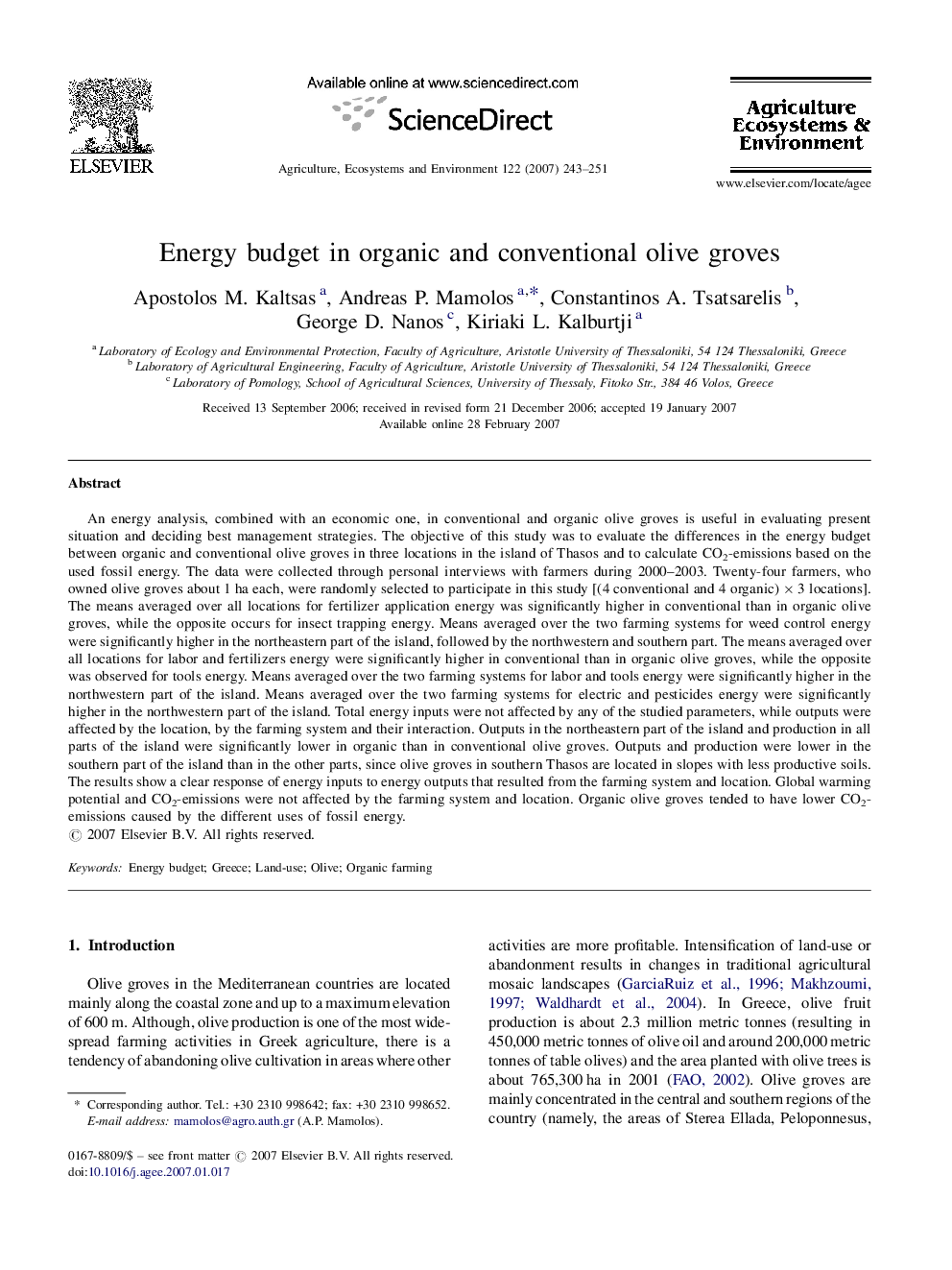| کد مقاله | کد نشریه | سال انتشار | مقاله انگلیسی | نسخه تمام متن |
|---|---|---|---|---|
| 2415650 | 1103970 | 2007 | 9 صفحه PDF | دانلود رایگان |

An energy analysis, combined with an economic one, in conventional and organic olive groves is useful in evaluating present situation and deciding best management strategies. The objective of this study was to evaluate the differences in the energy budget between organic and conventional olive groves in three locations in the island of Thasos and to calculate CO2-emissions based on the used fossil energy. The data were collected through personal interviews with farmers during 2000–2003. Twenty-four farmers, who owned olive groves about 1 ha each, were randomly selected to participate in this study [(4 conventional and 4 organic) × 3 locations]. The means averaged over all locations for fertilizer application energy was significantly higher in conventional than in organic olive groves, while the opposite occurs for insect trapping energy. Means averaged over the two farming systems for weed control energy were significantly higher in the northeastern part of the island, followed by the northwestern and southern part. The means averaged over all locations for labor and fertilizers energy were significantly higher in conventional than in organic olive groves, while the opposite was observed for tools energy. Means averaged over the two farming systems for labor and tools energy were significantly higher in the northwestern part of the island. Means averaged over the two farming systems for electric and pesticides energy were significantly higher in the northwestern part of the island. Total energy inputs were not affected by any of the studied parameters, while outputs were affected by the location, by the farming system and their interaction. Outputs in the northeastern part of the island and production in all parts of the island were significantly lower in organic than in conventional olive groves. Outputs and production were lower in the southern part of the island than in the other parts, since olive groves in southern Thasos are located in slopes with less productive soils. The results show a clear response of energy inputs to energy outputs that resulted from the farming system and location. Global warming potential and CO2-emissions were not affected by the farming system and location. Organic olive groves tended to have lower CO2-emissions caused by the different uses of fossil energy.
Journal: Agriculture, Ecosystems & Environment - Volume 122, Issue 2, October 2007, Pages 243–251